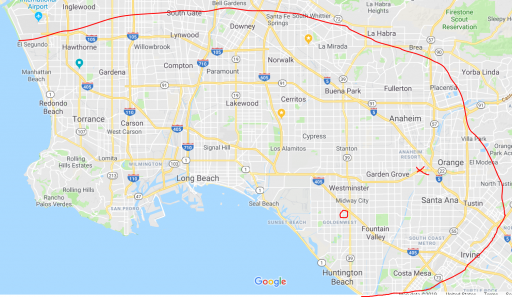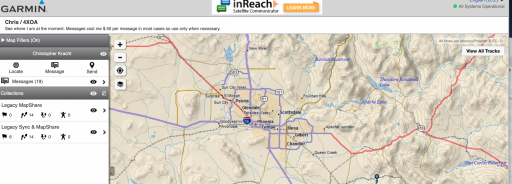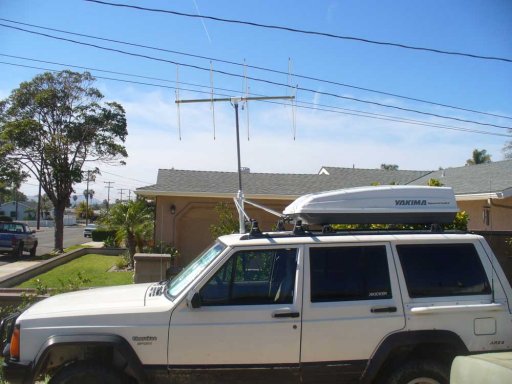
Off-Road Ranger I
Hey Everyone!
I am from Orange County, wife and I camp often and prioritize being prepared. I am looking for a way to reliably always be able to communicate with my loved ones for safety and check-in purposes (nothing fancy). My search got me to:
1.) Ham Radio
2.) Iridium Sat Phone
3.) Garmin InReach (Iridium network)
Based off these results, I passed my tech license test and my Ham call sign is KM6ZVW. I bought a Yaesu FT-70DR with an upgraded MFJ-1722 antenna. I also bought a magnetic car antenna Diamond RH77CA and own a Baofeng handheld as well. When I say reliable, I mean within ten minutes of trying,. While camping, I just wish to get help if needed. While day to day, I want to be able to communicate with my wife during any form of disaster or emergency. Below is the range I wish to accomplish. The X is my wife's place of work. I travel daily within the red circle for work. Our home is the circle. In a SHTF scenario, what kind of setup will guarantee communication? Iridium Sat phones are very expensive. Garmin InReach is pricey but probably worth it. Ham Radio, well I have my license so might as well. My questions are:
Is the cost of the Garmin InReach worth it and reliable?
For Ham Radio, as a new Ham what can I do to guarantee reliability within the circle? If repeaters go down, is Simplex reliable over that many miles? I will use my magnetic mounted antenna in my Honda Accord but my wife drives a Tacoma. What setup should I go with for the truck so that we can accomplish this range?

I am from Orange County, wife and I camp often and prioritize being prepared. I am looking for a way to reliably always be able to communicate with my loved ones for safety and check-in purposes (nothing fancy). My search got me to:
1.) Ham Radio
2.) Iridium Sat Phone
3.) Garmin InReach (Iridium network)
Based off these results, I passed my tech license test and my Ham call sign is KM6ZVW. I bought a Yaesu FT-70DR with an upgraded MFJ-1722 antenna. I also bought a magnetic car antenna Diamond RH77CA and own a Baofeng handheld as well. When I say reliable, I mean within ten minutes of trying,. While camping, I just wish to get help if needed. While day to day, I want to be able to communicate with my wife during any form of disaster or emergency. Below is the range I wish to accomplish. The X is my wife's place of work. I travel daily within the red circle for work. Our home is the circle. In a SHTF scenario, what kind of setup will guarantee communication? Iridium Sat phones are very expensive. Garmin InReach is pricey but probably worth it. Ham Radio, well I have my license so might as well. My questions are:
Is the cost of the Garmin InReach worth it and reliable?
For Ham Radio, as a new Ham what can I do to guarantee reliability within the circle? If repeaters go down, is Simplex reliable over that many miles? I will use my magnetic mounted antenna in my Honda Accord but my wife drives a Tacoma. What setup should I go with for the truck so that we can accomplish this range?







